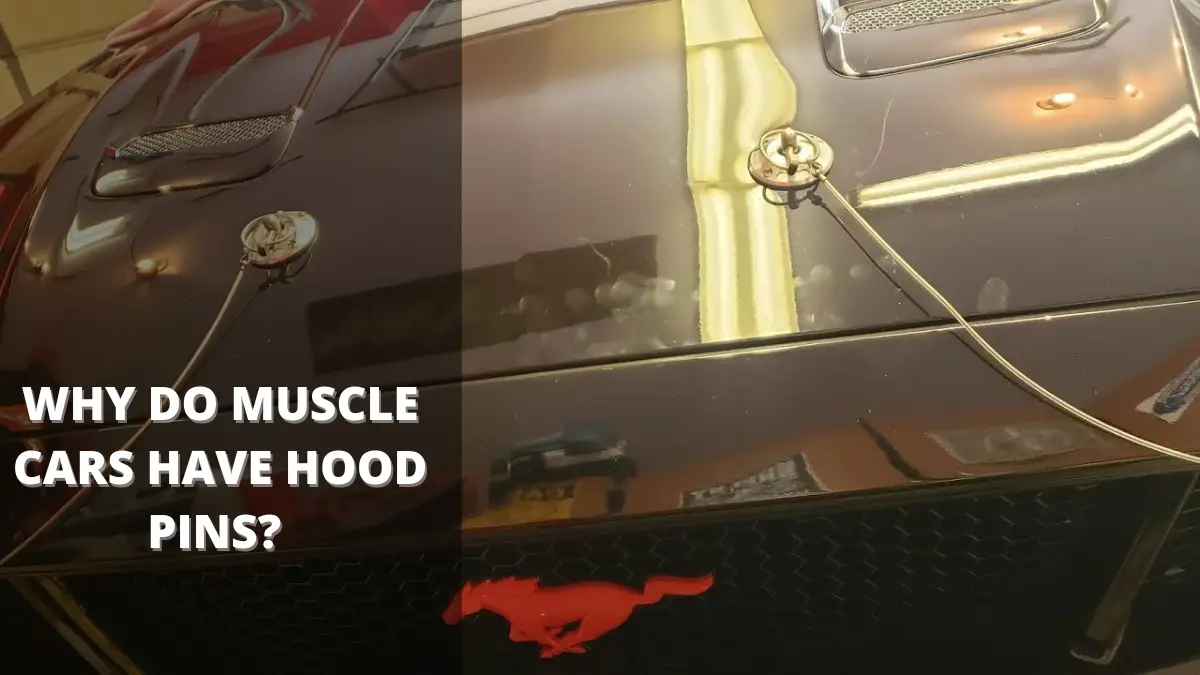So, you’re curious about why muscle cars have hood pins?
As a car mechanic, I can tell you that they serve as a secondary safety measure to keep the hood securely closed during high-speed driving.
But there’s more to it than that. Let’s dive deeper into the technical side of things so you can get a better understanding of the purpose and importance of hood pins.
The Technical Side of Hood Pins
Aerodynamics and Keeping the Hood in Place
When you’re driving a muscle car, you’re dealing with a powerful engine, and that power can create lift under the hood when you’re cruising at high speeds. This lift can cause the hood to shake, rattle, or even fly open if it’s not properly secured. Hood pins provide that extra layer of security to keep the hood in place, ensuring your engine stays protected.
Safety and Engine Protection
A secure hood is essential for both your safety and your engine’s performance. If the hood flies open while you’re driving, it can obstruct your view and pose a significant safety risk. Plus, keeping the hood closed helps protect your engine from debris, dirt, and other external elements that could affect its performance. Hood pins offer that extra reinforcement to keep everything locked down and running smoothly.
The Components of Hood Pins
Understanding the Hood Pin System
A standard hood pin system has a few key components, each playing an important role in securing the hood:
- Hood pin: A long, threaded pin made from steel or aluminum that passes through a hole in the hood.
- Lanyard: A cable or wire connecting the hood pin to the car’s body to prevent it from getting lost when the hood is opened.
- Retaining clip or cotter pin: A small, removable clip that secures the hood pin in place.
- Mounting plate: A metal plate mounted on the car’s body, providing a base for the hood pin to pass through.
Installing Hood Pins on Your Muscle Car
If you’re thinking about adding hood pins to your muscle car, the installation process involves a few steps:
- Determine the best location for the hood pins, making sure they’re symmetrical on both sides of the hood.
- Mark the location on the hood and car body, double-checking measurements for accuracy.
- Drill holes in the hood and body, ensuring proper alignment.
- Mount the hood pin plates on the car’s body and secure the pins with the retaining clips or cotter pins.
- Attach the lanyards to the hood pins and car body to complete the installation.
By understanding the technical aspects of hood pins and their importance in muscle cars, you can better appreciate their role in ensuring safety and performance while driving. If you ever need help with installing hood pins, don’t hesitate to reach out to a car mechanic like me for assistance.
Hood Pins: A Blend of Functionality and Style
The Aesthetic Appeal of Hood Pins
While hood pins have a practical purpose in muscle cars, they also add a unique style to the vehicle. Car enthusiasts often appreciate the aggressive look and racing heritage that hood pins represent. This makes them not only a functional addition but also a stylish one.
There’s a wide range of aftermarket hood pin kits available, offering various designs and materials to suit your personal preferences.
Modern Alternatives to Traditional Hood Pins
With advancements in automotive technology, modern muscle cars and high-performance vehicles may come equipped with more advanced hood latching systems. These systems can offer a similar level of security as hood pins, without the need for drilling and installation. However, some car owners still prefer the classic look and feel of traditional hood pins on their muscle cars, keeping the tradition alive.
Caring for Your Hood Pins
Regular Maintenance and Inspection
Just like any other part of your car, hood pins require regular maintenance and inspection to ensure they remain in good working condition. Check the pins, lanyards, and retaining clips for signs of wear, corrosion, or damage. If you notice any issues, it’s essential to address them promptly to maintain the effectiveness of your hood pin system.
Cleaning and Lubrication
To keep your hood pins functioning smoothly, clean them periodically to remove dirt, grime, and debris. Lubricate the moving parts, such as the retaining clips or cotter pins, with a suitable automotive lubricant to prevent rust and ensure easy removal when needed.
Conclusion
Hood pins serve an essential purpose in muscle cars by providing an additional layer of security for the hood, especially during high-speed driving. They help protect the engine, enhance safety, and add a touch of style to your vehicle.


